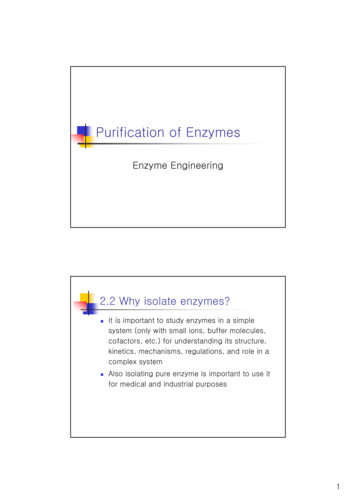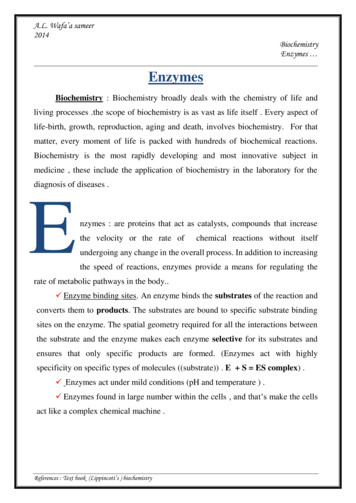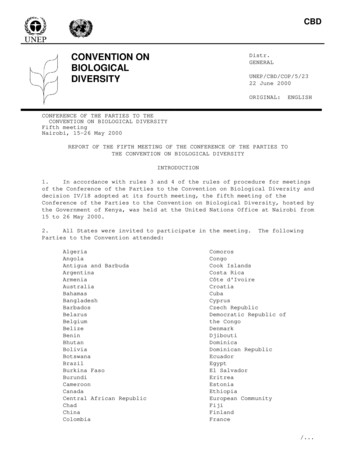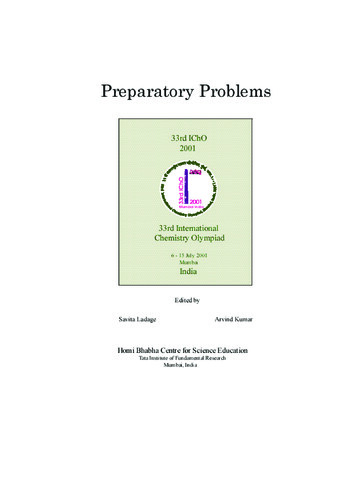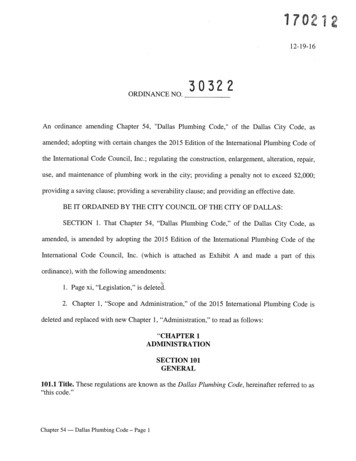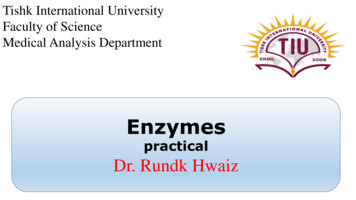
Transcription
Tishk International UniversityFaculty of ScienceMedical Analysis DepartmentEnzymespracticalDr. Rundk Hwaiz
Biochemical reactions require the participation of biological catalysts(biocatalysts), called enzymes. The substance converted by an enzyme is called a substrate, and asubstance resulting from the conversion of the substrate is called theproduct. The enzyme is not consumed during the reaction catalyzed by it, so oneenzyme molecule is involved in the conversion of many substratemolecules
The importance of Enzymes in Metabolism All of the chemical reactions occurring in a cell during metabolism. Enzymes increase the rate of these chemical reactions which occur duringmetabolism.– Lowers the activation energy
Enzymes accelerate the course of chemical reactions in the organism at least amillion times. For example: thrombin, is a proteolytic enzyme, which converts solublefibrinogen of blood plasma into fibrin monomer, which spontaneouslypolymerises to form insoluble fibrin. This reaction is of fundamental importancein the process of blood coagulation.
Characteristics of all enzymes Do not make anything happen that couldn’t happen on its own, just faster They are not used up or altered Same enzyme works in forward and reverse reaction Enzymes are reaction specific
Aim: To study the influence of Enzyme on reaction velocityTo investigate the effect of: Surface area on enzyme activity pH on enzyme activity. Temperature on enzyme activity
Lab invistigationInvistigating the enzyme catalase.The reaction of catalase in the decompositon of living tissue:H2O2CatalaseH2O O2Some sources of catalase: Liver Row potato
HypothesisEffect of pH on reaction rateWhen catalase (enzyme) is added to a medium of higher or lower pH ouside of it isoptimum pH range, the enzyme will denaturate and therefore not perform itsfunction of converting hydrogen peroxide into water and O2.Effect of surface area on reaction rateThe rate of a chemical reaction can be raised by increasing the surface area of asolid reactant. This is done by cutting the substance into small pieces, or by grindingit into a powder.To summarise:large pieces small surface area, small pieces (powder) large surface area
Effect of Temperature on reaction rateAs with many chemical reactions, the rate of an enzyme-catalysed reactionincreases as the temperature increases. However, at high temperatures the ratedecreases again because the enzyme becomes denatured and can no longerfunction.
Materials: Hydrogen peroxide (solution) Potato catalase Acitic acid Water bath Beaker, test tubes Stopwatch
Procedure:1. Place 5ml H2O2 in three test tubes2. Heat a piece of the catalase (potato) in water3. Cut a piece of the catalase (potato) in smaller pices4. Place the catalase (potato) in pH4 of solution H2O2,5. Place potato in all of the test tube after labling them6. Use stopwatch, detrmine how long it takes for reaction to take place.7. Record the results
What do you think will be the result?
Is your result valid and support the hypothesis?
Enzymes accelerate the course of chemical reactions in the organism at least a million times. For example: thrombin, is a proteolytic enzyme, which converts soluble fibrinogen of blood plasma into fibrin monomer, which spontaneously polymerises to form insoluble fibrin. This reaction is of fundamental importance
